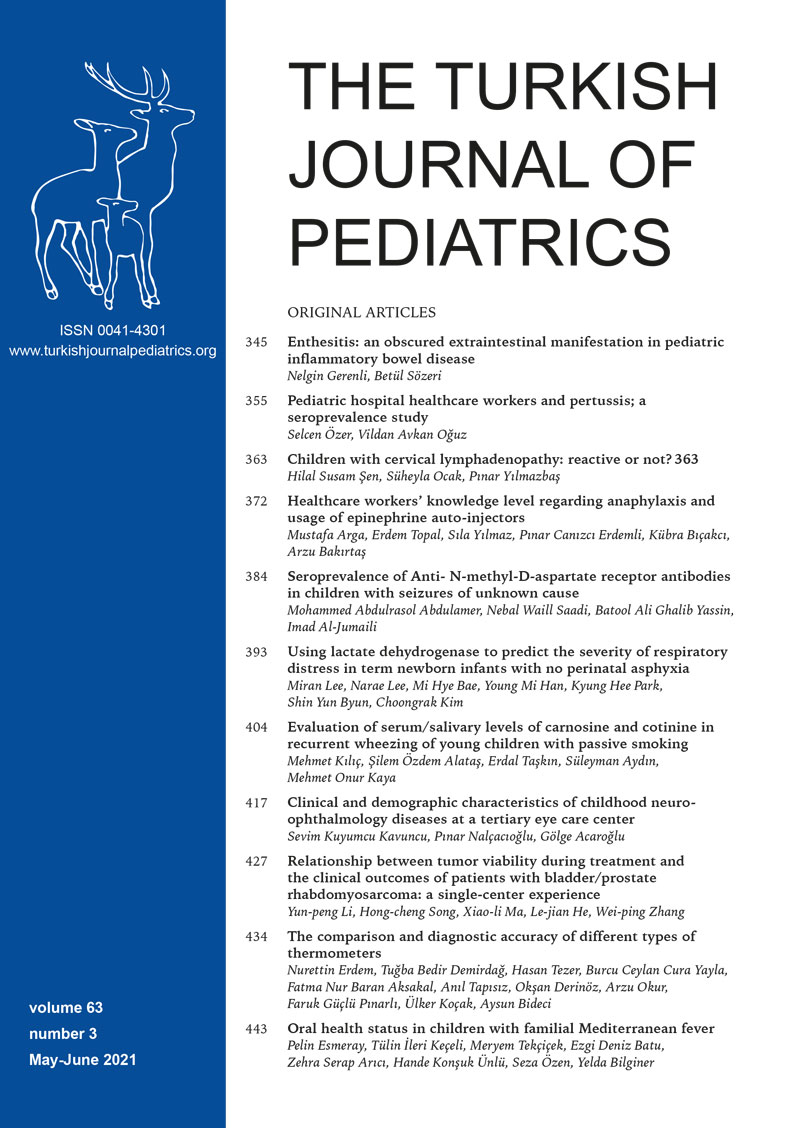Abstract
Background. This study aims to evaluate the etiology of cervical lymphadenopathies in children and to define the significance of demographic, clinical, and laboratory features in the prediction of malignancy.
Methods. Medical records of 527 patients were reviewed retrospectively between 2015 and 2019. The patients were examined in terms of demographics, clinical, radiologic, and serologic findings. A lymph node biopsy was performed in selected patients. The risk factors for malignancy were evaluated.
Results. Out of 527 children, 26 had neck masses mimicking lymphadenopathy; 501 had lymphadenopathy. The most common location was the anterior cervical region and the median age was 5.7 years. Thirty-nine patients had malignancy (lymphoma in 34, nasopharyngeal carcinoma in 3, leukemia in 1 and neuroblastoma in 1). The risk of malignancy was associated with older age, duration of > 4 weeks, lymph node size > 3 cm, supraclavicular location, presence of systemic symptoms, and hepatosplenomegaly (p < 0.001, p < 0.001, p < 0.001, p < 0.001, p < 0.001, p < 0.001). On laboratory evaluation, anemia, leukocytosis, and increased erythrocyte sedimentation rate were found to be associated with malignancy (p < 0.001, p=0.003, p < 0.001).
Conclusions. Cervical lymphadenopathies in children are generally benign but patients with persisting cervical lymphadenopathy, adolescent age, accompanying systemic symptoms and abnormal laboratory findings should be considered for an early biopsy.
Keywords: cervical lymphadenopathy, children, malignancy, reactive lymphoid hyperplasia, supraclavicular location
Copyright and license
Copyright © 2021 The Author(s). This is an open access article distributed under the Creative Commons Attribution License (CC BY), which permits unrestricted use, distribution, and reproduction in any medium or format, provided the original work is properly cited.














